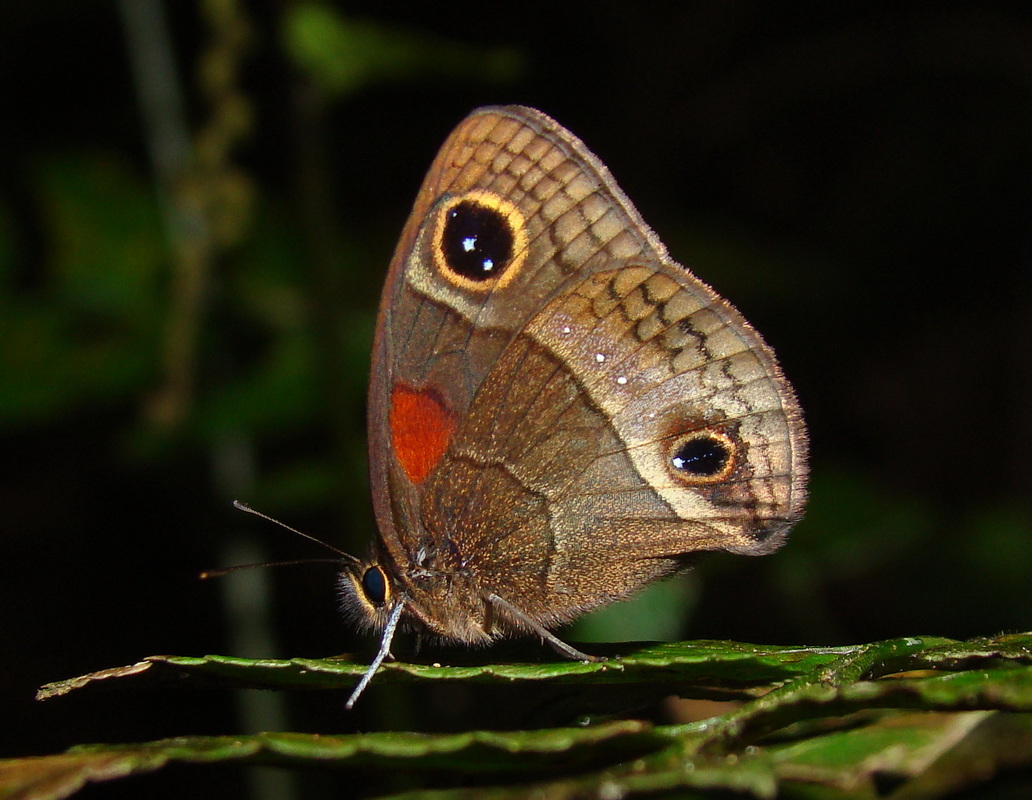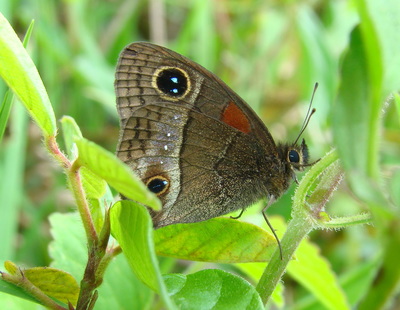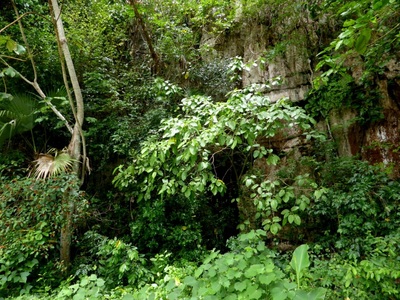Nymphalidae : Satyrinae
Calisto aquilum Núñez, 2013
Cuban Dark Calisto
Calisto aquilum Núñez, 2013
Cuban Dark Calisto
Description and Similar Species: Wingspan 35-42mm. Sexes similar. Differs from C. herophile by its darker hindwing background colour, straighter post median line and smaller post-median white spots. C. bradleyi has only two post-median white spots rather than four so that is easily discounted. C. muripetens also has only two post-median white spots and also has a muck darker wing-base and larger red patch on the forewing. C. torrei can be ruled out as that is a larger species and has only three post-median white spots, the central one of which is enlarged.
Range: Endemic to Cuba.
Status: One of the few Calisto to be found in more than one mountain range. C. aquilum is found in a few sites in semi-deciduous limestone forest (75-200m) in the Viñales valley in the western mountains of Pinar del Rio as subspecies occidentalis where it flies with C. herophile and C. bradleyi. Subspecies aquilum is found in both sections of the Escambray mountains of central Cuba at 450-1140m flying with C. herophile, C. muripetens and C. torrei..
Nectar Plants: Bidens pilosa.
Larval Foodplants: Unknown.
Range: Endemic to Cuba.
Status: One of the few Calisto to be found in more than one mountain range. C. aquilum is found in a few sites in semi-deciduous limestone forest (75-200m) in the Viñales valley in the western mountains of Pinar del Rio as subspecies occidentalis where it flies with C. herophile and C. bradleyi. Subspecies aquilum is found in both sections of the Escambray mountains of central Cuba at 450-1140m flying with C. herophile, C. muripetens and C. torrei..
Nectar Plants: Bidens pilosa.
Larval Foodplants: Unknown.
Foodplants and Habitat


